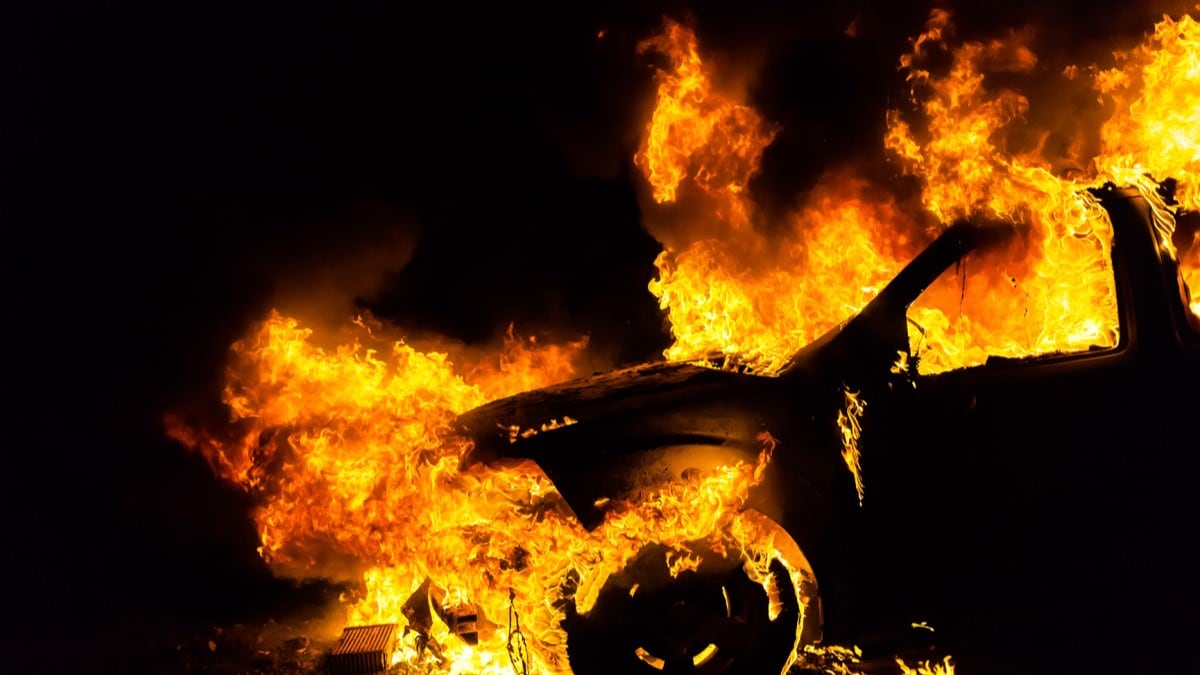
Novelty can mislead you. The media tends to report on uncommon and new issues as a result of issues which can be frequent and outdated aren’t very newsworthy. However a couple of information tales could make an thought — forgive us — catch hearth when there isn’t any knowledge to assist it.
The UK’s Guardian newspaper is out with a brand new report that illustrates the thought.
Utilizing knowledge from a number of nations, the report reveals electrical automobiles (EVs) are much less more likely to catch hearth than gas-powered automobiles.
Associated: Research — Electrical Automobiles Concerned in Fewest Automotive Fires
4 Knowledge Sources
Analyzing knowledge from Tesla’s world fleet, Australia, Sweden, and Norway (the nation with the very best focus of electrical automobiles), the paper discovered “the chance of being caught in an EV hearth seems general to be a lot decrease than for petrol or diesel automobiles.” The Guardian permits that the numbers may change as extra folks begin to drive electrical.
But it surely notes, “There are thousands and thousands of electrical automobiles on roads world wide, so some knowledge on the prevalence of fires is rising.”
Tesla reviews, “The variety of fires on U.S. roads involving Teslas from 2012 to 2021 was 11 instances decrease per mile than the determine for all automobiles.” Tesla, we’d word, has a monetary incentive to decorate and a historical past of exaggeration.
We’re not conscious of any conflicts of curiosity, nevertheless, for the Australian protection institution or Scandinavian governments. They again up the declare.
In Norway, the analysis discovered, “there are between 4 and 5 instances extra fires in petrol and diesel automobiles, in line with the Directorate for Social Safety and Emergency Preparedness.” The Swedish Civil Contingencies Company equally discovered 68 fires per 100,000 automobiles of every type however simply 3.8 fires per 100,000 EVs or hybrids.
Australia’s Division of Defence researched the identical query and located that “there was a 0.0012% likelihood of a passenger electrical car battery catching hearth, in contrast with a 0.1% likelihood for inner combustion engine automobiles.”
One Type of Automotive Makes use of Hearth to Transfer
One other supply additionally backs up the discovering — frequent sense.
Inner-combustion-powered automobiles, in spite of everything, are at all times on hearth a little bit once they’re working. It’s proper there within the identify. They perform because of thousands and thousands of tiny fires. For a gas-powered automotive to “catch hearth,” it simply has to fail to include its hearth.
For an electrical automotive to catch hearth, a fireplace has to begin.
However Novelty = Information Stories
So why do most of us consider EVs usually tend to catch hearth?
In all probability as a result of once they do, it will get reported within the information. The information not bothers to report most automotive fires.
Paul Christensen, a professor of pure and utilized electrochemistry at Newcastle College, tells the Guardian that electrical bikes and scooters are a part of the issue, too. These, he notes, typically use batteries constructed by “unregulated, inexperienced producers, and even DIY jobs utilizing internet-sourced elements.”
Main automakers can’t afford to be sloppy about batteries. The one main case we’re conscious of when a flaw in a battery led to a number of EV fires has already price Common Motors about $2 billion. The corporate subsequently tightened up its testing processes. EV fires are additionally difficult to struggle, “require extra water to place out, can burn virtually 3 times hotter,” the Guardian notes.
The variety of EVs on the highway continues to be small. Individuals are on tempo to purchase as many as 15 million automobiles this 12 months, simply 1 million electrical. So, we’ll get extra knowledge on the query over time.
However, for now, the Guardian notes, EVs must vastly outnumber inner combustion engines to be chargeable for an equal variety of combustions.